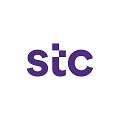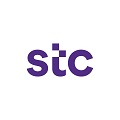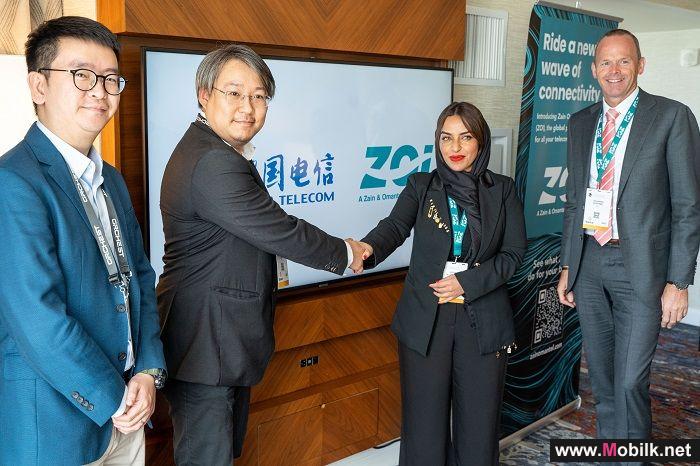Need of the Hour: Dedicated Networks for Industrial Connectivity
Mobilk - With Industry 4.0, the manufacturing and logistics industries are in the midst of digital transformations to increase automation and efficiency. There is a lot to be gained with Industry 4.0, but it all begins with having the connectivity to support it.
As manufacturers address modernization, automation and digitalization, dedicated networks offer a way to support multiple use cases, retain control of network resource allocation and ensure that critical data remains on-site.
The process of integrating the networks of one or more manufacturing sites can be triggered by a need to replace legacy networks or the increasing mobility requirements of their operations. A unified platform is required which integrates voice, data, video and IoT.
Digitalization Driving Demand
Industries are now taking steps to incorporate connectivity and cellular into their standards, as many industrial enterprises are defining 5G as their primary connectivity platform for both information technology (IT) and operational technology (OT) systems to reach new levels of productivity, security and safety.
At the same time, connected products are redefining offerings, and what a manufacturer is; everything from a ballpoint pen to heavy machinery can be enhanced "as a service". When manufacturers can co-create offerings based on direct user feedback, the customers bond with a product and brand grows stronger.
Cellular networks are not only relevant to optimizing industrial production processes, connected products on the consumer and enterprise markets rely on it, too. As networks evolve from LTE to 5G, cellular becomes even more powerful, as does the value cellular enables.
Manufacturers that see 5G as a new platform for their operational technology (OT) often state that they need dedicated resources to ensure critical manufacturing processes are guaranteed the connectivity resources they require. There are various ways to implement this, but the early adopters have concluded that they require dedicated networks.
Service providers will want to ensure they have the ability to deliver superior, easy-to-use connectivity to industrial customers. By addressing digitalization in industrial markets and providing a clear path to 5G, they can achieve significant new revenue with this enhancement to their current offerings.
The Role of Service Providers
Making the jump from analog to digital was manageable for many industries; however, through successive digital technologies it has become increasingly challenging. With the advent of LTE, and now 5G, for many industries it no longer makes sense to build, own and operate infrastructure that is not a core business.
That said, a service provider that is willing and able to release sufficient spectrum and deliver the service required by an industrial enterprise is not always available, so enterprises have requested regulators give them an option of acquiring spectrum directly for their purposes and potentially building networks themselves.
Industrial enterprises are experienced in running their own connectivity networks for OT in-house, but a dedicated LTE or 5G network needs to be designed, integrated, optimized and managed. Service providers are skilled in this area and comfortable managing frequent 3GPP new releases of functionality. A service provider can bring value by offering a service that combines locally licensed and public spectrum.
Digitalization projects depend upon securing wider access to data, shared within sites, between sites and between parties. In the case of critical national infrastructure, public safety workers may need on-site roaming access for emergencies.
These factors drive a need for a capable connectivity platform rather than the legacy of incompatible networks. The use of multi-operator core networks (MOCN) and radio resource partitioning (RRP) is one way for public and private networks to efficiently coexist, splitting the traffic generated from the same radio units on-site. This can be an effective model, provided it fulfills the enterprise’s requirements.
While it is evident for many industries that data is a highly prized competitive asset, it is an exception rather than a rule that an industrial site requires to work in complete isolation from other sites or indeed from upstream/downstream supply chain partners and customers.
Secure mobility for both local and wide area communications is a growing requirement of many industries. Service providers are able to offer advanced mobility solutions that combine local spectrum with their own national spectrum assets. This data-driven environment is what drives industrial enterprises to evolve their operations with an embedded connectivity platform for the future.
The transition to Industry 4.0 is a must for the industrial sector. Digitalization supports competitiveness of these businesses, which in turn secures jobs, and also supports a strong and attractive manufacturing sector.
Reports and Studies
China Telecom Global Limited (CTG), the world-leading provider of integrated telecommunication services, has signed a strategic subsea capacity and..
Reports and Studies
Espoo, Finland – Nokia, Qualcomm Technologies, Inc., and T-Mobile today announced that they have achieved a worlds first showcase of successfully..
Reports and Studies
Steven Yi, President of Huawei Middle East and Central Asia, gave a keynote on the second day of LEAP, Saudi Arabias largest and most comprehensive..

 Vodafone Oman
Vodafone Oman Emirates Telecom
Emirates Telecom  Ooredoo Om
Ooredoo Om Ooredoo Qa
Ooredoo Qa stc Bahrain
stc Bahrain Orange Egypt
Orange Egypt Mobily
Mobily Zain Jo
Zain Jo omantel
omantel STC
STC Emirates Du
Emirates Du Asiacell
Asiacell Etisalat Egypt
Etisalat Egypt  Telecom Egypt
Telecom Egypt jawwal
jawwal Orange Jo
Orange Jo Umniah
Umniah Zain Sa
Zain Sa Bahrain Batelco
Bahrain Batelco Zain Bh
Zain Bh Wataniya palestine
Wataniya palestine Kuwait Viva
Kuwait Viva  Zain Kw
Zain Kw Vodafone Qa
Vodafone Qa MTN Syria
MTN Syria Syriatel
Syriatel Sabafon
Sabafon Zain Iq
Zain Iq MTN Yemen
MTN Yemen Ooredoo Kw
Ooredoo Kw Vodafone Egypt
Vodafone Egypt  Samatel
Samatel Huawei
Huawei Samsung
Samsung MOTOROLA
MOTOROLA Lenovo
Lenovo Alcatel
Alcatel LG
LG Nokia
Nokia Sony Ericsson
Sony Ericsson HTC
HTC BlackBerry
BlackBerry Siemens
Siemens Acer
Acer Sony
Sony Asus
Asus VK
VK APPLE
APPLE BenQ-Siemens
BenQ-Siemens Sagem
Sagem Eten
Eten HP
HP Panasonic
Panasonic Amoi
Amoi Toshiba
Toshiba Sharp
Sharp Sonim
Sonim Bird
Bird Mitac
Mitac Philips
Philips Vertu
Vertu Pantech
Pantech Micromax
Micromax Maxon
Maxon Haier
Haier I-mate
I-mate Gigabyte
Gigabyte I-mobile
I-mobile Kyocera
Kyocera BenQ
BenQ Microsoft
Microsoft Telit
Telit Connect
Connect Sendo
Sendo Mitsubishi
Mitsubishi SEWON
SEWON NEC
NEC DELL
DELL Thuraya
Thuraya Neonode
Neonode Be
Be Qtek
Qtek Bosch
Bosch Palm
Palm MWG
MWG Fujitsu Siemens
Fujitsu Siemens XCute
XCute WND
WND INQ
INQ O2
O2 Innostream
Innostream Benefon
Benefon Google
Google


















